Recent Fire Damage Posts
Waiting for Cleanup Means Taking More Damage | SERVPRO® of North Fort Worth
5/1/2023 (Permalink)
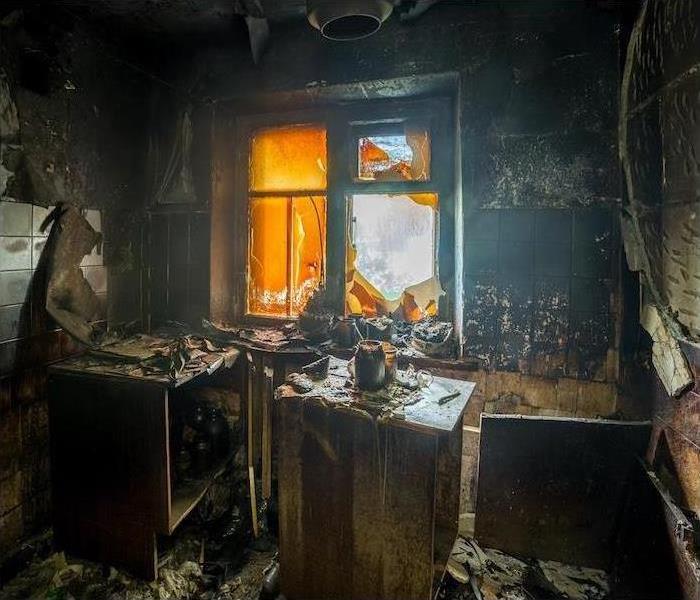 If a fire issue pops up during the holidays, remember the trusted leader in the recovery industry, SERVPRO of North Fort Worth.
If a fire issue pops up during the holidays, remember the trusted leader in the recovery industry, SERVPRO of North Fort Worth.
We used to do a lot more waiting. We did so much of it at the doctor’s office, for example, that they have a whole room dedicated to it, and named for it. But now we’ve advanced so much and sped up our processes that even a lot of doctor visits can be made without even leaving home—set up a simple video chat, and that’s that.
In some cases, eliminating the wait is simply a matter of convenience; in others, however, it’s a matter of importance.
When you have a damage issue arise at home, waiting will cost you more than time. That’s why your local SERVPRO is available 24 hours a day, with no exceptions, for emergency service. Getting started on your cleanup and recovery right away is part of our plan to serve you better and keep the damage to a minimum.
After a fire. The flames aren’t your only issue; what they leave behind can be equally problematic. Sticky, black soot covers cooler spots in your home after a fire, in areas where combustion wasn’t able to finish its process. Tiny particles settle into carpets, fabrics and walls within minutes, staining and further mucking up your already-damaged home.
In only a few hours, the dismal damage done by soot and the malodorous work of smoke become permanent parts of your home, meaning they can only be managed by complete removal of affected drywall, flooring and more.
After water damage. Once water breaks free of its containment somewhere in your home, a countdown to mold begins, and you’ve only got 48 hours to prevent it. After that, mold sets up camp all over surfaces and organic materials in your dampened areas.
Left to grow, mold becomes a structural and medical hazard that can damage both your home and your health.
In addition to these situations, your home can take on any number of acute challenges with the occurrence of a freak storm or natural disaster, and when that happens, you’re left with no time to wait.
It’s good to know that you can click or call SERVPRO anytime, night or day, and get the best team in the industry working the case. Faster to Any Size Disaster is something we take very seriously around here, because time is more than money—it’s an opportunity to save your home from further damage.
When you need help after a home or business disaster, fast service is a priority, and there’s nobody faster or more prepared than SERVPRO. Call us anytime to take advantage of our 24-hour emergency service.
Take Precautions to Keep Backyard Fires Under Control | SERVPRO® of North Fort Worth
7/21/2022 (Permalink)
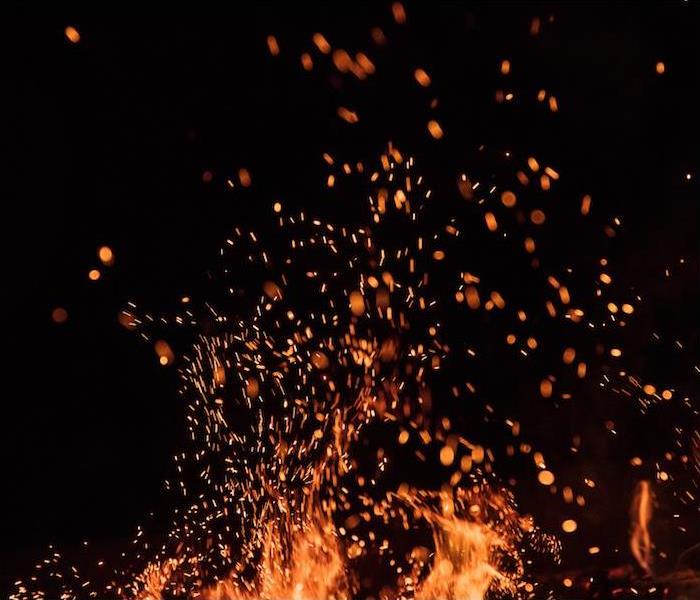 If you have experienced fire or smoke damage, contact SERVPRO of North Fort Worth.
If you have experienced fire or smoke damage, contact SERVPRO of North Fort Worth.
Relaxing by a fire in your own backyard is a wonderful way to spend a summer evening. Hot dogs, s’mores and scary stories are just a few of the fun outdoor activities you and your family can do together.
These backyard fires serve us in many ways. We use them for entertainment, to make food, to keep away bugs or as a way to get rid of debris or trash, but all fires come with their own set of hazards, even the ones we consider to be safe. The National Park Service states that nearly 85% of wildfires are man-made.
Wildfires are particularly common in Texas, since conditions can get very dry. From 2013 to 2018, Texas experienced around 10,000 wildfires, and since this number is only increasing, it’s crucial to understand how to protect your Fort Worth home.
Of course, you can still burn your yard trimmings, light your tiki torches, toast your marshmallows and grill your hot dogs, if local laws permit. If you make sure to take precautions every time you burn, you can minimize your risk of accidental fires and still enjoy a backyard campfire.
Recreational Fire Hazards
Any kind of open flame can be hazardous, but grills, campfires, fire pits and fireworks are responsible for many outdoor fires each year. Around 8,800 house fires are started by grills each year, usually due to human error. Always make sure the propane tanks and gas lines that fuel your grill are in good working order before starting it, and always keep an eye on the food you’re cooking over the flame.
When making a campfire, locate it in a safe area away from buildings or vehicles, and only use a match or a lighter to light the fire. Once your campfire is lit, only use wood to keep it burning and make sure to watch the embers even after you’re all done making your s’mores.
Fire pits are a simple way to create a campsite feel in your own backyard, but you should use this equipment with the same caution as a normal campfire. If your fire pit is portable, place it in a safe area away from overhangs and wooden decks.
While burning may seem like an easy way to get rid of construction or household waste, you should only use approved firewood.
Other Outdoor Fire Hazards
Fire and flammable substances still have a purpose even with their hazards. If your yard accumulates a large number of leaves in the fall and you don’t have a garbage disposal system or a street pickup service, burning your debris could be the only option to keep your yard tidy.
Before burning anything, ensure local authorities allow burning, to begin with. Keep an eye out for burn bans and request a permit if needed. In Fort Worth, there is currently a burn ban in place that prohibits open burning, but you are still able to enjoy and use fires as long as they are contained.
Eliminating dead leaves or plants is a smart way to protect your home from wildfires, along with strategic landscaping to slow down fires before they approach your house. Knowing what is safe to burn and following fundamental rules of fire safety can keep any fire you start from becoming out of control.
We all keep gas for our vehicles and yard tools in a shed or garage, but poor storage can have disastrous effects. Use only gasoline-safe containers, and keep your containers out of children’s reach. And when you’re having trouble lighting a fire, you shouldn’t grab for the gas can, because gas should only be used for its intended purpose.
Before lighting any fire outside, be aware of local regulations and weather forecasts. If it’s a very windy day or conditions are dry, save the s’mores for another day and reschedule that bonfire.
And if your home is damaged by fire, our team at SERVPRO can be on the scene as soon as you need us. Our skilled team is equipped to manage every aspect of fire damage, and we strive to promptly and thoroughly repair as much of your property as we can.
Burn safely outdoors. And save some chocolate for us! If you have experienced fire or smoke damage, contact us today to get restoration started faster.
Lessen the Risk of Fires With These Methods | SERVPRO® of North Fort Worth
6/3/2022 (Permalink)
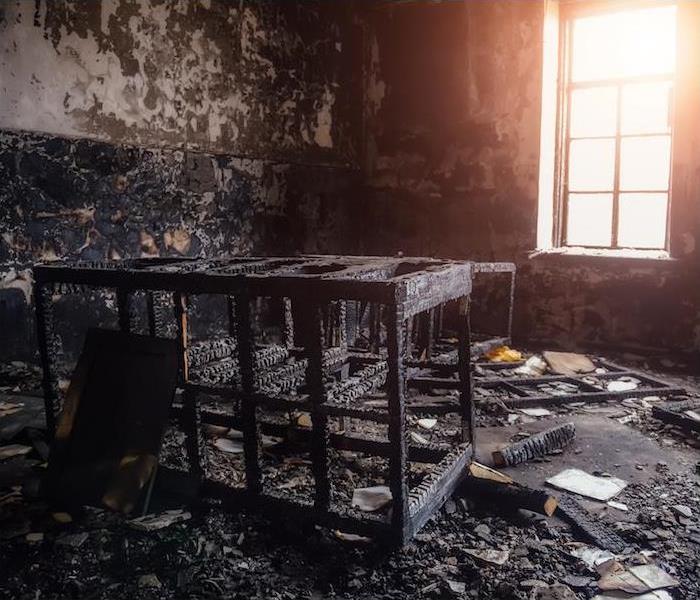 If your home is damaged in a house fire, SERVPRO of North Fort Worth is here to help. Contact us for any fire restoration need.
If your home is damaged in a house fire, SERVPRO of North Fort Worth is here to help. Contact us for any fire restoration need.
House fires are the most prevalent disaster in the country, claiming the lives of countless individuals each year. Since the start of this year, the American Red Cross has already confirmed over 20,000 fires house fires. In that time, more than 70 fire fatalities have been documented in Texas alone.
Because these figures are only expected to rise, it is critical to have fire prevention safeguards in place in your Fort Worth home. The majority of these measures are basic practices that you can include in your daily routine, such as routinely cleaning your home:
Create a Defensible Space in Your Yard
In the aftermath of wildfires, California enacted a rule requiring residents to establish defensible space. This requires a carefully planned yard designed to limit the possibility of an outside fire reaching your home. Given the high risk of wildfires in North Fort Worth, having a strategic lawn plan could keep you and your property safe in the case of a wildfire.
Planting trees and plants at a safe distance from your home could not only slow the spread of fire but also provide space for firefighters to work if necessary. Cleaning up dead leaves, fallen limbs and other dead shrubs around your home may provide less fuel for a fire if one starts.
Make sure to keep an eye on your gutters as well! Dead plants and leaves can accumulate in your gutters, so make sure to thoroughly clean them out.
Clear the Clutter
A cluttered home is stressful enough; adding the risk of fire hazards from a messy area will only add to this stress. Pay special attention to clothes or towels piling up around the house. Not only can these block an exit if you need to escape a fire, but they can also ignite flames when near anything that releases heat, such as a water heater.
Space heaters are another appliance that produces heat. Any loose clothing or blankets near your heater, just like water heaters, could quickly cause a fire. To avoid potential fire hazards, keep these items at least three feet away.
Keep It Clean & Keep It Safe
Because most fires start in the kitchen, keeping appliances clean can help reduce flames. Cleaning your stovetop regularly to remove any food particles or grease will help prevent fires.
Fires can start in any room of the house. Keeping each room clean could help prevent an unintentional fire from starting. Set aside time to thoroughly clean your home regularly.
Other small chores around the house, such as dusting near your space heater or electrical sockets, should be done regularly.
Remember that a clean home equals a clear mind! Keep up with household duties to help yourself and your home and reduce the risk of fires.
If you have experienced fire damage or want to learn more about our fire damage restoration services, contact us today. We’re here to act fast, 24⁄7.
The Same Things That Start a Fire Can Be Used to Stop It | SERVPRO® of North Fort Worth
1/24/2022 (Permalink)
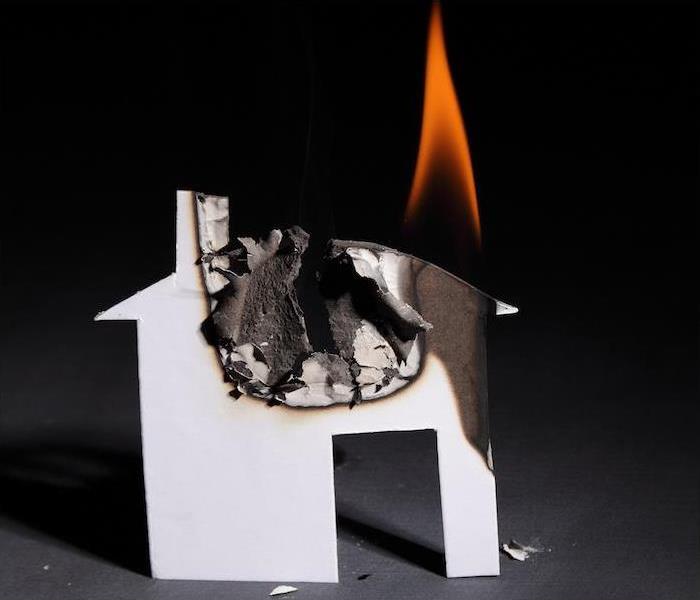 If your home or business has any damage, SERVPRO of North Fort Worth is ready around the clock to help you recover.
If your home or business has any damage, SERVPRO of North Fort Worth is ready around the clock to help you recover.
Quick, think of a 3D triangle. You’ve probably thought of one of two shapes—either a pyramid, which has a square base and four triangular sides, or the topic of today’s geometry lesson/fire safety blog, a tetrahedron, which has four total sides, all of them triangles.
See, scientists use a visual aid called the fire tetrahedron to depict the four essential elements of every fire. These four things must happen if a fire is to ignite and spread—which gives us a window into reactive fire safety as well.
The 4 Things a Fire Needs to Live
Fuel. Fire without something to burn is simply a fire in the air—and, well, that can’t happen. Anything that can burn can be a source of fuel for fire.
Heat. Everything that can be a fire’s fuel source has a flash point—a point at which it gets hot enough that it can catch fire. The reaching of this flash point is key to a fire’s ignition.
Oxygen. As a fire burns its fuel, it requires oxygen to keep going. The consumption of the oxygen around the fire is a crucial element, because the fire has to have it in order to perpetuate itself.
Chemical Chain Reaction. The fuel, the heat and the oxygen work in series to form a chain reaction—a self-repeating series of chemical events that keep the fire going until it’s interrupted by one of the following methods.
The 4 Ways to Stop a Fire
Cool it. Ask most people how to stop a fire, and the first answer they’ll give you is, “Pour water on it.” Chemically, the water doesn’t make much difference, but what it’s good for is quickly cooling a fire’s fuel source and restoring a thermal balance.
Smother it. Have you ever wondered why “stop, drop and roll” actually works? It works by smothering a fire on your clothing, thus depriving it of the oxygen it has to have to survive. The same goes for fire blankets and most fire extinguishers.
Starve it. When a fire runs out of food, it has to stop burning. This can be accomplished either by removing existing fuel sources or cutting the fire off from fuel sources into which it can expand.
Interrupt the chain reaction. Certain chemicals and elements have a way of tripping up the chain reaction, causing a breakdown in the fire mechanism by negating oxygen or otherwise disrupting the process. It seemed like the compound halon was going to be the great fire savior, because it is extremely effective in this way. But it has a negative impact on the ozone layer and has been banned from future production. Other elements are being used in its place to a similar, if lesser, effect.
If the fire tetrahedron makes a wreck of your home or business, we’re ready around the clock to help you recover. Contact SERVPRO anytime for fast, thorough cleanup and recovery after a fire.
Waiting for Cleanup Means Taking More Damage | SERVPRO® of North Fort Worth
12/19/2021 (Permalink)
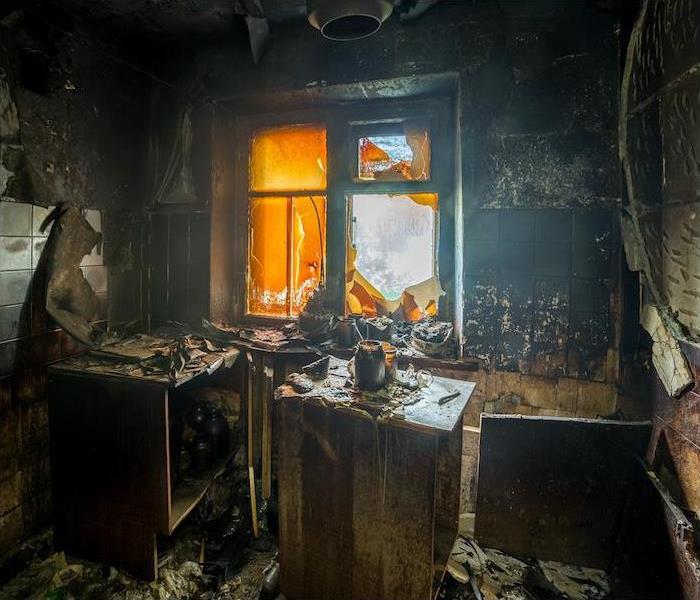 If a fire issue pops up during the holidays, remember the trusted leader in the recovery industry, SERVPRO of North Fort Worth.
If a fire issue pops up during the holidays, remember the trusted leader in the recovery industry, SERVPRO of North Fort Worth.
We used to do a lot more waiting. We did so much of it at the doctor’s office, for example, that they have a whole room dedicated to it, and named for it. But now we’ve advanced so much and sped up our processes that even a lot of doctor visits can be made without even leaving home—set up a simple video chat, and that’s that.
In some cases, eliminating the wait is simply a matter of convenience; in others, however, it’s a matter of importance.
When you have a damage issue arise at home, waiting will cost you more than time. That’s why your local SERVPRO is available 24 hours a day, with no exceptions, for emergency service. Getting started on your cleanup and recovery right away is part of our plan to serve you better and keep the damage to a minimum.
After a fire. The flames aren’t your only issue; what they leave behind can be equally problematic. Sticky, black soot covers cooler spots in your home after a fire, in areas where combustion wasn’t able to finish its process. Tiny particles settle into carpets, fabrics and walls within minutes, staining and further mucking up your already-damaged home.
In only a few hours, the dismal damage done by soot and the malodorous work of smoke become permanent parts of your home, meaning they can only be managed by complete removal of affected drywall, flooring and more.
After water damage. Once water breaks free of its containment somewhere in your home, a countdown to mold begins, and you’ve only got 48 hours to prevent it. After that, mold sets up camp all over surfaces and organic materials in your dampened areas.
Left to grow, mold becomes a structural and medical hazard that can damage both your home and your health.
In addition to these situations, your home can take on any number of acute challenges with the occurrence of a freak storm or natural disaster, and when that happens, you’re left with no time to wait.
It’s good to know that you can click or call SERVPRO anytime, night or day, and get the best team in the industry working the case. Faster to Any Size Disaster is something we take very seriously around here, because time is more than money—it’s an opportunity to save your home from further damage.
When you need help after a home or business disaster, fast service is a priority, and there’s nobody faster or more prepared than SERVPRO. Call us anytime to take advantage of our 24-hour emergency service.
The 5 Places Fire Is Most Likely to Strike | SERVPRO® of North Fort Worth
11/5/2021 (Permalink)
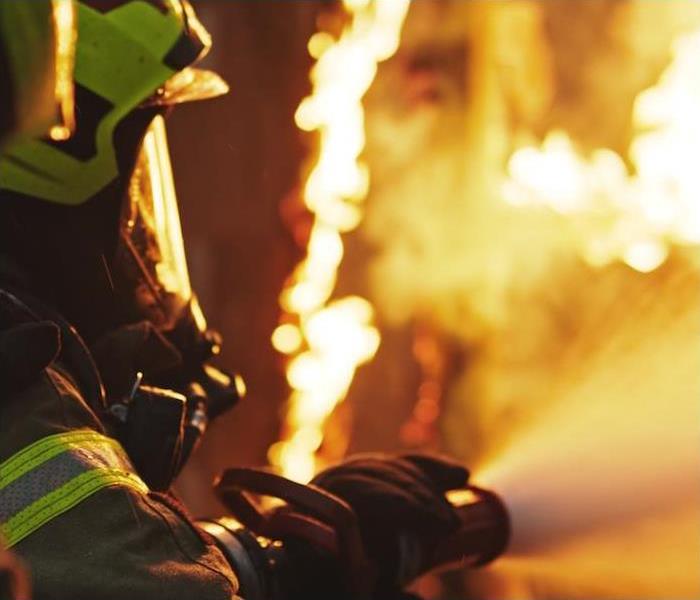 Regardless of the cause, the SERVPRO of North Fort Worth team is here for you if your home is affected by fire.
Regardless of the cause, the SERVPRO of North Fort Worth team is here for you if your home is affected by fire.
The majority of fires are non-domestic—most of them begin either naturally or accidentally, in nature settings or industrial locations—but not all of them. You may be surprised to learn, in fact, that more than 25% of all reported fires occur at home, as do more than 75% of all fire-related deaths.
With such a number of fires being domestic, you probably want to know, and indeed it’s in your interest to know, where they’re popping up. Let’s take a look.
Cooking. If you roll a six-sided die, you’re as likely as not to roll either an even or odd number. The same probability actually applies to home fires as well—taken statistically, half of all home fires start in the kitchen, and the leading cause thereof is unattended cooking. Want to simply and easily decrease your home’s fire risk? Pay attention and stay in the room while you cook.
Heating equipment. Portable space heaters are a notorious source of home fires. In colder weather, you may use them to cozy up your favorite spot or save some energy, but be aware that they run the risk of causing fires, either by tipping over, overheating or overloading their power sources. And always remember to keep heating elements of any kind safely away from flammable items or materials.
Electrical fires. There’s electrical wiring running throughout your home, and it only takes a little short or a little hot wire to get a fire going. Always make sure your home’s wiring is well-maintained, and don’t increase your fire risk by overusing extension cords, plugging appliances into loose or sparky outlets or overloading lightning fixtures.
Intentional fires. After all this time, some of us are still setting fires on purpose. A reported 28,000 intentional home fires are started each year, causing purposeful damage to property.
Smoking materials. Though it’s the least common way for fires to start at home (only 5% of domestic fires start this way), it’s the most common cause of home fire casualties. Smoking in bed or while impaired is incredibly dangerous, and leads to unfortunate and even deadly scenarios.
Regardless of the cause, SERVPRO is here for you if your home is affected by fire. Contact your local team today to see how we can help.
Fire Safety in the Fall | SERVPRO® of North Fort Worth
9/22/2021 (Permalink)
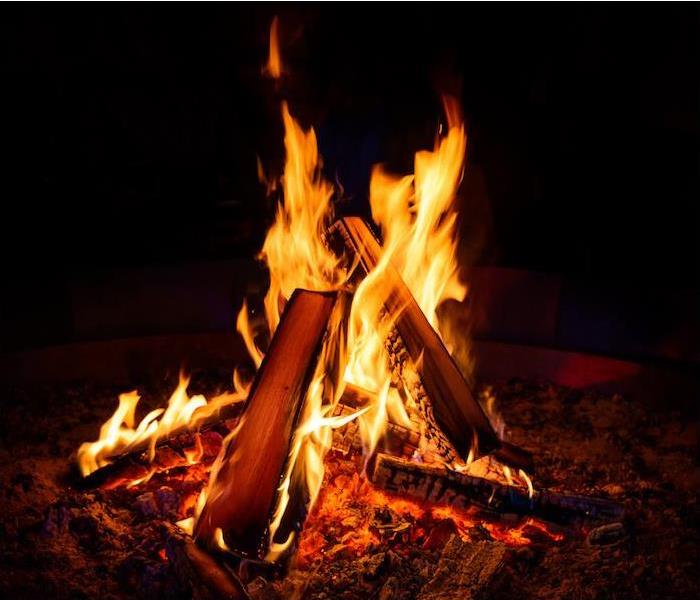 Be mindful about fall fire safety. Always remember that SERVPRO of North Fort Worth is the trusted leader in the restoration industry.
Be mindful about fall fire safety. Always remember that SERVPRO of North Fort Worth is the trusted leader in the restoration industry.
Fall in Fort Worth isn’t exactly the same as in other areas of the country—our average high temperature in mid-September is still in the high 80s, so nobody is breaking out the space heater just yet. But fall does offer a reprieve from the oppressive heat of summer, and we do get the excitement of football and pumpkin-spice everything. It’s cool enough now that you might even hit the campground for a weekend getaway.
Whatever your activities are this fall, make sure you keep fire safety in mind. Home fires and wildfires are always a threat, and autumn is no different.
Campfire Safety
It’s of utmost priority that you know how to safely and properly build your campfire, just as it’s of utmost priority that you know how to put it out.
Stick to the tried-and-trusted method of building your fire with a lighter or matches—don’t ever use an accelerant like kerosene or lighter fluid. Start with simple kindling, then add small sticks and larger wood pieces. It’s slower, but it’s much safer.
Remember that no fire should be left alone, and before you break away from camp your fire should be entirely snuffed. Don’t leave any hot ash or live embers. Use buckets of water to repeatedly cover the fire, until all is cool to the touch.
Leaf Burning
Open burning is legal in unincorporated areas of Tarrant County, provided you’ve been granted permission by the fire marshal.
But if you burn, make sure you do it safely—use a burn barrel if you have one, and keep all fires 50 feet away from your residence and 300 feet from structures on adjacent property. Don’t burn under low tree branches, and don’t burn at night.
Burning anything besides organic yard waste or household trash is prohibited, as construction materials or oils can produce fire and health hazards.
Halloween
Be careful as you decorate! Fall decor, especially creepy spider webs and hanging items, can present a fire hazard, particularly if you go big on the candles.
Keep the vanilla pumpkin pillars at least three feet away from anything that could ignite. And if you use any string lights for yard decor, plug them directly into outlets (as opposed to extension cords) and unplug them when they’re not in use.
If a fire hazard should turn from potential to reality in your home, remember the trusted leader in the recovery industry and contact SERVPRO to get your property fully restored right down to the smell of smoke.
Wildfire Protection That Starts in the Yard | SERVPRO® of North Fort Worth
8/1/2021 (Permalink)
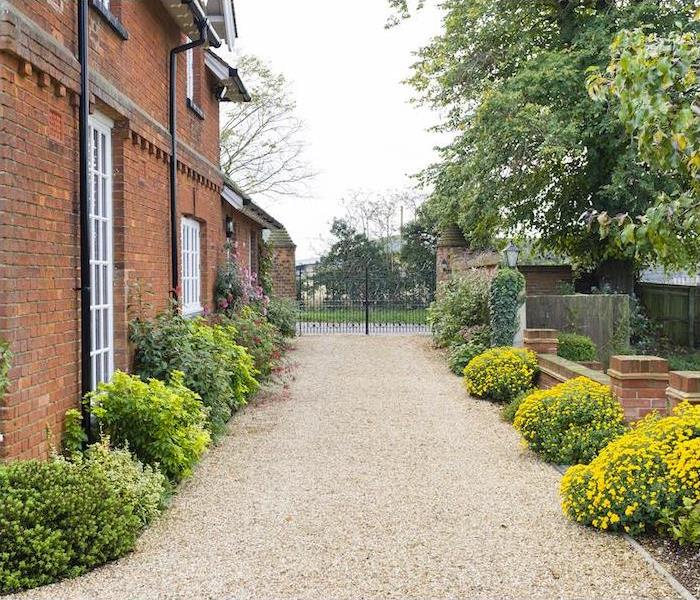 If your home is damaged by fire or any other reason, SERVPRO of North Fort Worth is ready and able to repair any damage.
If your home is damaged by fire or any other reason, SERVPRO of North Fort Worth is ready and able to repair any damage.
One of any Texan’s greatest fears, especially if you have land or livestock, is seeing your property go up in a wildfire, and wildfires are a more frequent perpetrator of property loss than you might imagine. They’re seemingly inexhaustible, and with so much of our world being made of combustible and organic material, it’s a small miracle that we are able to get them contained at all.
But there are ways by which we can shield our homes from wildfire, aside from the simplest and most impactful, which would be simply being more careful.
Today, let’s learn about “defensible space.”
What Is Defensible Space?
It’s not a new Star Trek thing—“defensible space” is a series of buffer zones you can create around your home by getting rid of dry fuel like brush and dead trees, adding gravel, concrete or treated plants near your house, pruning your trees to prevent fire from spreading easily, and keeping plants and trees at safe distances from one another.
Think of it as turning your land into a protective labyrinth (aka defense), designed to shelter your home during a wildfire by minimizing a fire’s fuel sources. Defensible space also gives firefighters their best chance of stopping a wildfire before it reaches your home’s perimeter.
Defensible space isn’t required by law in Texas, but it’s a good fire safety principle all the same.
Why Defensible Space Matters
Wildfires happen more frequently in our area and westward, but there’s a surprising number of wildfires across the country: There were over 59,000 wildfires across the United States in 2020, and even without California’s 10,000+ fires, that’s an average per state of almost a thousand fires.
Texas had the second highest total in 2020, with over 6,700 fires burning up over 256,000 acres of land. And 2021 is shaping up in similar fashion—the number of fires nationwide has increased 25% over the first half of the year.
Anything we can do to shield or protect our property from the scourge of wildfire is a good idea, and defensible space is a simple, practical solution that can yield significant results.
If your home is damaged by fire of any sort, wild or not, SERVPRO is ready and able to repair the damage caused. Get in touch today to get the pros on your team.
Fire Safety Tips for the Backyard | SERVPRO® of North Fort Worth
6/22/2021 (Permalink)
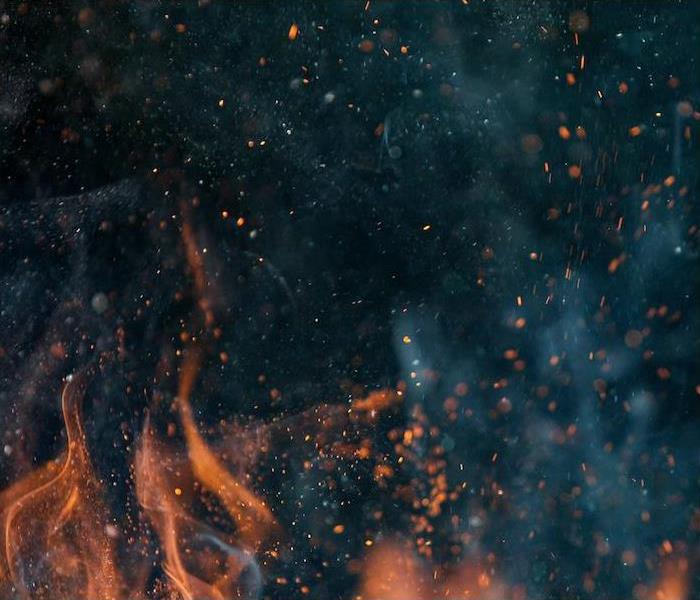 Restoring fire and smoke damage is one of our specialties. Contact SERVPRO of North Fort Worth to learn more.
Restoring fire and smoke damage is one of our specialties. Contact SERVPRO of North Fort Worth to learn more.
Spring brings a wonderful sense of rebirth and new beginnings. No matter how bad winter might have felt, spring comes with sunshine and growth, and it reminds us that hope is always around the corner.
It also beckons us outdoors to enjoy nature’s beautiful scenery, which of course always reveals the fact that we can’t resist the universal human urge to barbecue.
There are myriad opportunities for backyard gatherings and barbecue occasions in spring and summer—engagement parties, graduation celebrations, family reunions and the list goes on.
And these are great, but unfortunately, they also mean an increase in accidental home fires. In fact, spring sees more daily fires on average than any other time of year.
So let’s look at a few of the usual suspects and see what you can do to avoid fire accidents this grilling season.
The grill. The grill is the most dangerous of your typical backyard activities. It’s centered around fire and combustible elements, combined with dripping, pooling grease and possibly even gas. So follow the grill safety habits necessary to operate it safely: Check your grill to make sure it’s in proper working order, on solid, level ground, and away from anything flammable. Don’t use any liquid accelerants to make it burn hotter or faster, and don’t forget to clean it well between uses. Almost 20% of grill fires are due to poor cleaning.
The fire pit. The fire pit is the perfect place for conversation and company, not to mention roasted marshmallows. Just do it safely: Keep a bucket of water within reach to douse errant flames or embers, as well as to slowly extinguish the fire when the night is through. Keep careful watch over the fire at all times, keeping children and pets at a safe distance. And as tempting as adding leaves or pine needles may be, don’t do it or you risk sending flying embers toward your home or whatever is downwind.
Chimneys and dryer vents. While you’re in fire safety mode, take care of your chimney now that you’re not using your fireplace. Clean out the layers of ash and soot so they’re not a problem in the fall. And check your dryer’s ventilation pipe. Lint that manages to escape the clutches of the filter hides out in the vent pipe and waits for the right time to catch fire.
Your local SERVPRO technicians are on hand 24⁄7 for emergencies. If you encounter fire damage at your home or business, no matter the cause, we will be there faster and have it cleaned up sooner. Call or click today and experience the SERVPRO difference.
Simple Steps for Preventing Winter Fires | SERVPRO® of North Fort Worth
1/29/2021 (Permalink)
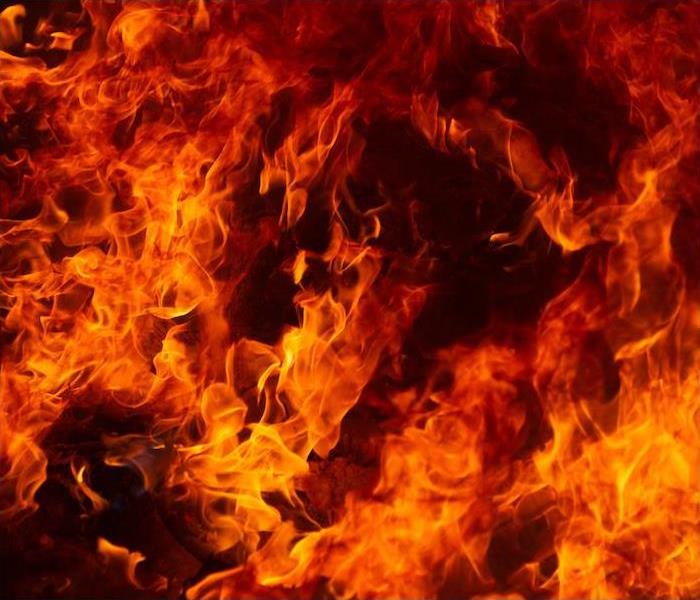 House fires tend to peak during the winter. The SERVPRO of North Fort Worth team is available 24/7 in the event of an emergency.
House fires tend to peak during the winter. The SERVPRO of North Fort Worth team is available 24/7 in the event of an emergency.
You’re more likely to suffer a house fire during the winter than during any other season during the year. In fact, insurance industry experts say that as many as 890 people die from house fires every winter.
That number doesn’t count the Americans injured in house fires or the damaged homes and lost property. Not every fire can be prevented because some are caused by natural disasters or accidents that couldn’t be predicted. But many more are caused by appliances and accidents that can be prevented.
The good news is you can take small steps that can put you in the best shape possible to ensure that your home is safe.
Making Fire Prevention Easier
We’ve pulled together this simple list that can help you incorporate fire safety into your daily routine:
Work to make your kitchen safer. Grease catches fire quickly.. Water may cause them to grow, so you can’t put them out with water. Keep a fire extinguisher in your kitchen to put out these dangerous fires. Baking soda or a metal lid will work, too.
Have your furnace serviced. Even if your furnace seems to be working fine, it’s a good idea to have a professional check it. If your vents are clogged, or your blades are dirty, it can be a fire hazard.
Be careful about how you place candles. If candles are burning when you leave home or placed in a spot where they can be easily knocked over, then they can start a fire. Blow them out instead of leaving them burning. And never place them somewhere a child or pet can knock them over.
If your home is damaged due to a fire or any other cause, you can always count on us for restoration assistance. We have teams who are available 24⁄7 in the event of an emergency. Contact us at any time to learn more about our restoration services and how we can help your family.
Home Fire Pit Tips
1/2/2021 (Permalink)
Fall, winter, and spring are when North Texan’s enjoy their fire pits. We gather outside and spend the evenings with friends and family. This is even more so in the time of social distancing. Before you start dreaming of moonlit nights and toasted marshmallows, take a moment to check out some of these tips from Allstate to remember.
Backyard Fire Pit Safety Tips:
- Whether you prefer a built-in or portable fire pit, choose one that is not too large for the area. The pit should be a minimum of 10 feet away from any structures or combustible materials as well as away from trees, fences, sheds, power lines, and telephone wires.
- Make sure that the seating area is large enough and properly placed for comfort and ventilation.
- Check wind direction before lighting a fire.
- Don’t use flammable fluids (gasoline, lighter fluid, etc.) to light or relight fires.
- To start the fire, use a lighter to ignite crumpled pieces of paper covered with small sticks. Then, add larger sticks and a log or two to keep it burning.
- Burn only dry material. Damp material will create excess smoke.
- Don’t wear flammable clothing (like nylon) or any loose-fitting clothing.
- Never leave the fire unattended, and keep pets and children far away from the fire as they will be attracted to it.
- Keep a fire extinguisher, garden hose, or bucket of water nearby.
- As the fire dies down, use a shovel and spread out the ashes to allow them to cool down. Then slowly pour water over those ashes and watch them closely to be sure that no burning embers remain or reignite. Put the cooled ashes in a specially designated ash storage metal can.
If your fire just happens to get away from you and you have fire damage, SERVPRO of North Fort Worth is Ready to Help. Call us at (817) 232-3333 and we will be there in a moment's notice.
 If a fire issue pops up during the holidays, remember the trusted leader in the recovery industry, SERVPRO of North Fort Worth.
If a fire issue pops up during the holidays, remember the trusted leader in the recovery industry, SERVPRO of North Fort Worth.






 24/7 Emergency Service
24/7 Emergency Service








